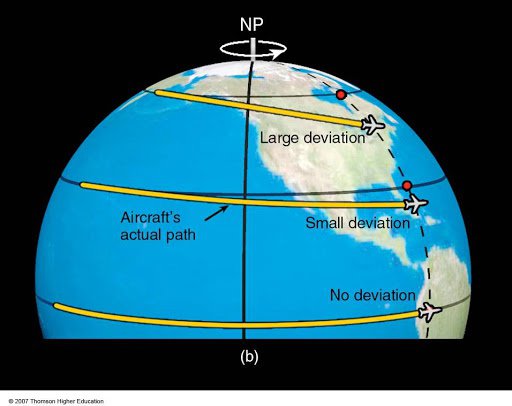
"If Earth rotates, why doesn't it affect the airplane’s distance?"
Share
"Hey gang, I'm wondering why, despite Earth's vigorous rotation, the distance between two points on our planet remains unaltered?" - Levi
Thanks for the email Liam. Great question!
The answer lies in the steadfast nature of physical measurements; the distance from Tokyo to New York, for instance, remains consistent irrespective of the Earth's dynamic rotation. But, let's delve deeper into this celestial puzzle. If Earth rotates, should flying from west to east or vice versa take more time due to varying speeds under the aircraft?
The fascinating resolution to this puzzle lies in understanding the integrated system of Earth and its atmosphere. While Earth's rotation might suggest a time disparity between flights, the reality is that the atmosphere enveloping the aircraft rotates synchronously with the Earth. It's a nuanced dance, where Earth and its atmospheric companion form a cohesive system, dispelling the expectation of time differences in flights.
However, the cosmic ballet introduces a captivating concept known as the Coriolis Effect. This phenomenon, a result of Earth's rotation, induces a force acting perpendicular to the direction of motion. The Coriolis Effect is instrumental in shaping the prevailing winds across the globe, contributing to diverse natural flows in different regions.
This atmospheric choreography, influenced by the Coriolis Effect, can significantly impact aircraft ground speeds, thereby affecting flight times between two cities. It's the unseen interplay of forces, rather than Earth's rotation itself, that introduces variability in the time it takes for an aircraft to traverse the Earth's surface.
The story doesn't end here; it extends into a myriad of atmospheric intricacies. Wind patterns influenced by obstructions, high and low-pressure systems, solar heating, coastal dynamics, cloud formations, hurricanes, tornados, and the westerly Jet Stream all contribute to the symphony of winds shaping our skies. Each element introduces nuances and variations, further influencing the time it takes for an aircraft to journey between destinations.
While the statement, "the atmosphere is rotating with the Earth," holds true in a broad sense, it's crucial to acknowledge the nuanced dynamics that unfold at different altitudes. The viscosity of air and the gradual decrease in pressure and density as we ascend play a role in the intricate dance of winds. Even at typical airliner altitudes, where air pressure and density persist, there is an observable westward movement relative to the ground, a subtle yet fascinating detail in the grand tapestry of atmospheric phenomena.
In conclusion, the enigma of Earth's rotation and its impact on air travel unveils a rich narrative of atmospheric forces and celestial ballet. While the fundamental distance between two points remains unchanged, the time it takes to traverse this distance is intricately woven into the ever-changing winds and currents of our dynamic atmosphere. It's a testament to the complexity and beauty of the systems governing our planet's skies, inviting us to marvel at the wonders that unfold above and beyond.
You’ve come this far…
Why not venture a little further into A.S.S. - our exclusive Australian Space Society.
And keep thrusting Australia into the deep unknown…
#Space_Aus




